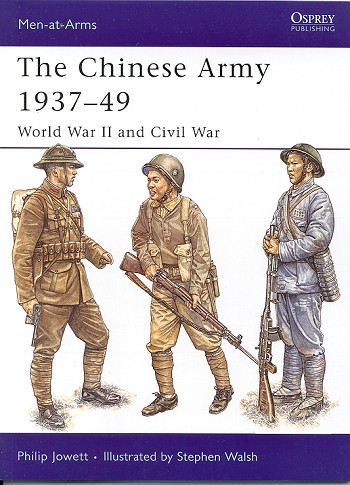 The war in China has often been referred to as
'the forgotten war'. The main focus of the Allies was the defeat of Germany so
that is where most of the resources were sent. The Pacific war was as much a
naval war as anything, which left the Chinese pretty well on their own. Sure,
the US made money available to the Chinese and after 1941, did send in troops
and more aid, but the bulk of the fighting was left up to the Chinese.
The war in China has often been referred to as
'the forgotten war'. The main focus of the Allies was the defeat of Germany so
that is where most of the resources were sent. The Pacific war was as much a
naval war as anything, which left the Chinese pretty well on their own. Sure,
the US made money available to the Chinese and after 1941, did send in troops
and more aid, but the bulk of the fighting was left up to the Chinese.
It is in this theater that the Japanese had most of their troop
strength. A huge percentage of the Japanese Army was used in the land war
against China and their greatest gains were made in 1944. Fortunately, this
couldn't be sustained, though the outlook was in question for some time.
The Chinese had been fighting the Japanese since 1937, a difficult
job as the Chinese Army was not a coordinated force, but a number of smaller
forces under the command of various warlords. Then there were the communists,
who were also trying to become a power in China. The invasion by Japan brought a
tenuous peace amongst local warring factions until the Japanese were defeated.
Then it was a battle between the Nationalists led by Chiang Kai-shek, and the
communists led by Mao Tse-tung.
What is really striking about the Chinese army is during this time
is the lack of commonality in weapons and dress. You'd find one army using
mostly German equipment, one with a lot of French gear and another using a
mixture of British and US supplied materials.
The author does a commendable job of cutting through a lot of the
confusion and provides explanations for where all this stuff came from and how
the use of equipment and uniforms changed as the conflict progressed. Thanks to
some great period photos and the excellent illustrations, we are able to see
just how these soldiers in various parts of the Chinese theater were dressed and
what equipment they used.
This is a fascinating book that provides a wealth of information
on the subject. It helps to untangle what can be a confusing subject and should
be on the shelves of those who are interested in this area of conflict.
September 2005
For more on the complete line of Osprey books, visit http://www.ospreypublishing.com/. In
the US, it is Osprey Direct at 44-02 23rd St, Suite 219, Long Island City, NY 11101., where you can get a catalogue of
available books.
If you would like your product reviewed fairly and quickly by a
site that has around 300,000 visitors a month, please contact me or see other details in the Note to Contributors.
 The war in China has often been referred to as
'the forgotten war'. The main focus of the Allies was the defeat of Germany so
that is where most of the resources were sent. The Pacific war was as much a
naval war as anything, which left the Chinese pretty well on their own. Sure,
the US made money available to the Chinese and after 1941, did send in troops
and more aid, but the bulk of the fighting was left up to the Chinese.
The war in China has often been referred to as
'the forgotten war'. The main focus of the Allies was the defeat of Germany so
that is where most of the resources were sent. The Pacific war was as much a
naval war as anything, which left the Chinese pretty well on their own. Sure,
the US made money available to the Chinese and after 1941, did send in troops
and more aid, but the bulk of the fighting was left up to the Chinese.